Snow, football, wings and…architecture?
While Buffalo is known for many things, people from outside of the city are often surprised to learn about its extensive architectural history and unique designs from some of the most famous American architects, including Frank Lloyd Wright, Louis Sullivan, H.H. Richardson, E.B. Green and Louise Bethune. In fact, Buffalo is considered one of the most architecturally significant cities in the country.
The New York Times once wrote that Buffalo’s architecture, particularly the buildings constructed between the American Civil War and the Great Depression, helped create “a new, distinctly American form of architecture” and has “influenced design throughout the world.”
The cities of Buffalo and Niagara Falls, NY feature several properties that have been designated as National Historic Landmarks, the highest distinction that can be given to a property in the U.S.
We’ve broken down some of Buffalo’s most important architectural achievements and history. We highly suggest exploring them this summer to learn more about their historical significance and gain a greater appreciation for our city’s architectural beauty.
Revolutionary City Design
According to the University at Buffalo, the city of Buffalo’s radial street grid was designed by Joseph Ellicott of the Holland Land Company in 1804. The design was loosely based on Pierre Charles L’Enfant’s 1791 plan for Washington, D.C., an Americanized version of Paris’s system of radiating boulevards. Buffalo is one of only three U.S. cities modeled after this plan.
Ellicott’s design was supplemented by a system of parks and parkways designed by Frederick Law Olmsted, who had designed New York City’s Central Park. According to PBS, Olmsted came to Buffalo in 1868 and was asked to choose a site for a park. Instead, he and Calvert Vaux recommended three sites to be connected by a new concept: parkways.
According to Buffalo Olmsted Parks, their idea was not just to link city and suburban roads, but to have long green fingers extending into the city from large parks. With their dense shade trees and lush green grass, parkways allow people to travel through populated or commercial areas in a more relaxing atmosphere with more beautiful scenery.
The system Olmsted and Vaux designed became the first coordinated park system in the nation, which led Olmsted to declare that Buffalo was “the best planned city, as to streets, public places, and grounds, in the United States, if not in the world” when displaying the plan at the Centennial Exposition in Philadelphia in 1868.
The current Buffalo Olmsted Park System is made up of six parks, seven parkways, eight circles and several smaller spaces. This guide will take you through all of these lush green spaces.
Architectural Innovation
Not only was Buffalo’s city design architecturally significant, its buildings were widely admired for their innovative takes on traditional styles.
As The New York Times architecture writer Nicolai Ourousoff wrote, “Buffalo was founded on a rich tradition of architectural experimentation. The architects who worked here were among the first to break with European traditions to create an aesthetic of their own, rooted in American ideals about individualism, commerce and social mobility.”
Frank Lloyd Wright
When Buffalo industry was thriving in the early 1900s, prominent American architects were called to Buffalo to showcase their designs. And one of the most famous ones, Frank Lloyd Wright, made his mark in a big way on the fast-growing city.
According to Visit Buffalo Niagara, Darwin D. Martin, an executive at Buffalo’s Larkin Company, fell in love with Wright’s vision and convinced the Larkin Board of Directors to commission Wright to design the company’s new office building. While that building no longer stands, Martin and Wright built a relationship that led to the extensive collection of his buildings still in Buffalo today. Wright’s Buffalo portfolio includes the Martin House, located in North Buffalo’s Parkside neighborhood.
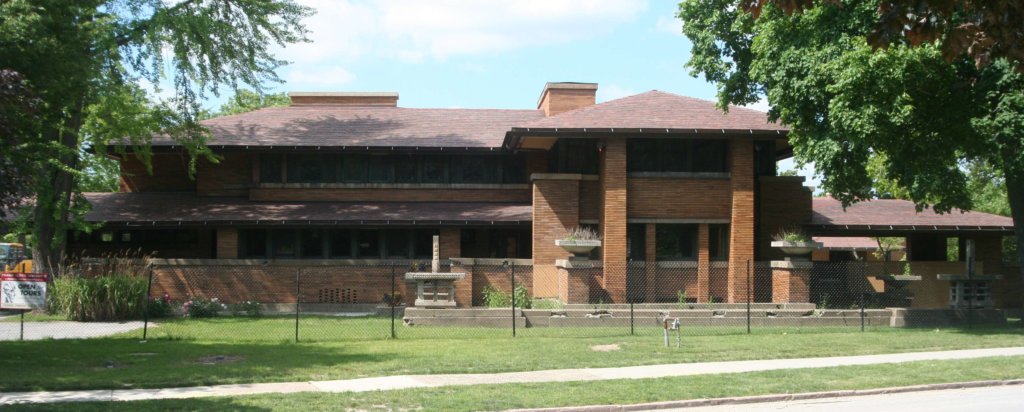
According to Visit Buffalo-Niagara, it is believed that Wright had a virtually unlimited budget in designing the Martin House. The House was Wright’s opportunity to design more than just a home, but rather a campus of interrelated buildings. The house features 30,000 square feet with an open plan, where almost every room looks out onto the lush gardens and trees on the 1.5 acre property.
Completed in 1905, the Martin House is said to be one of the best examples of Wright’s prairie-style design. The main house features eight bedrooms and a large living room that connects to the dining room and to an outside veranda. It also features large central fireplaces and many Wright-designed art glass windows, including his famous “Tree of Life” design. The house was designated as a National Historic Landmark in 1986.
Wright’s other Buffalo buildings include the Graycliff Estate (sometimes called “The Jewel on the Lake”) on the shores of Lake Erie and a boathouse, mausoleum and filling station built nearly a century after they were first designed. The estate is heavily wooded and high up on a bluff overlooking Lake Erie. Like the Martin house, the entrance to the main house showcases Wright’s classic prairie design style. In addition to these buildings, Wright also designed the Walter V. Davidson and William R. Heath Houses, which are still maintained as private residences in North Buffalo.
Louis Sullivan
Other famous architects were called to Buffalo to design industrial buildings for its downtown core. One such architect was Louis Sullivan, who designed the Guaranty Building (formerly called the Prudential Building), an early Buffalo skyscraper, with architect Dankmar Adler. Sullivan has been described as the “father” of the American skyscraper due to his accomplishments in a critical time in American history, and this building helped cement that reputation.
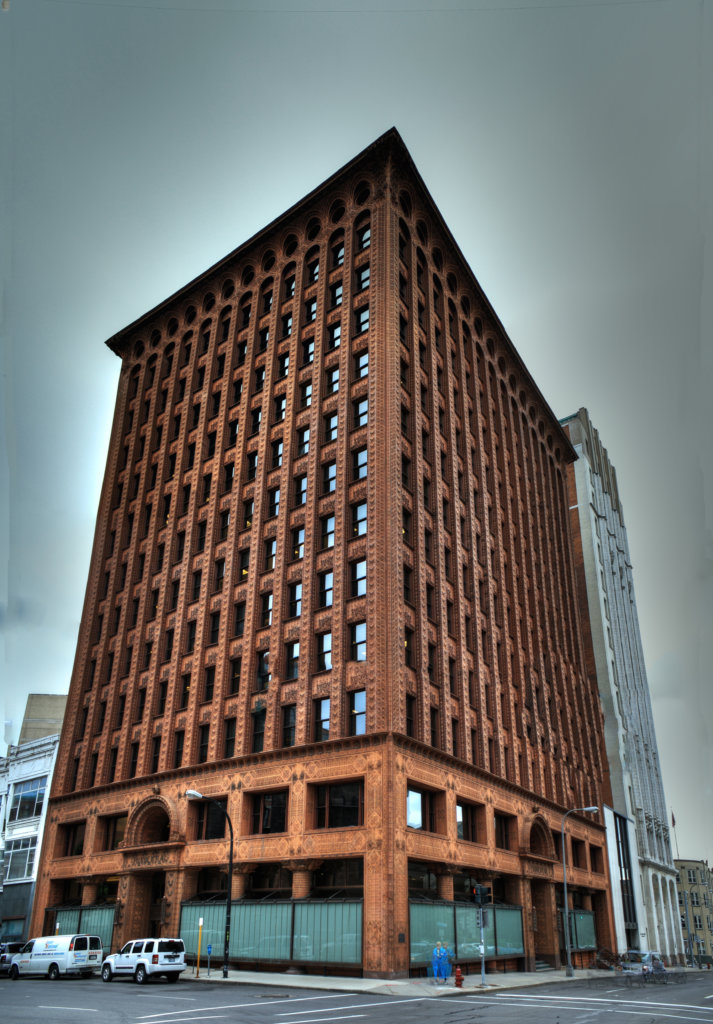
H.H. Richardson
Henry Hobson Richardson was another prominent architect that had a lasting impact on the city of Buffalo. Along with Louis Sullivan and Frank Lloyd Wright, Richardson is considered one of “the recognized trinity of American architecture.”
Best known for his work in a style that became known as “Richardsonian Romanesque,” Richardson’s biggest architectural contribution to Buffalo was the Richardson Olmsted Complex, which opened in 1880. Olmsted and Vaux also designed the gorgeous grounds and gardens throughout the campus.
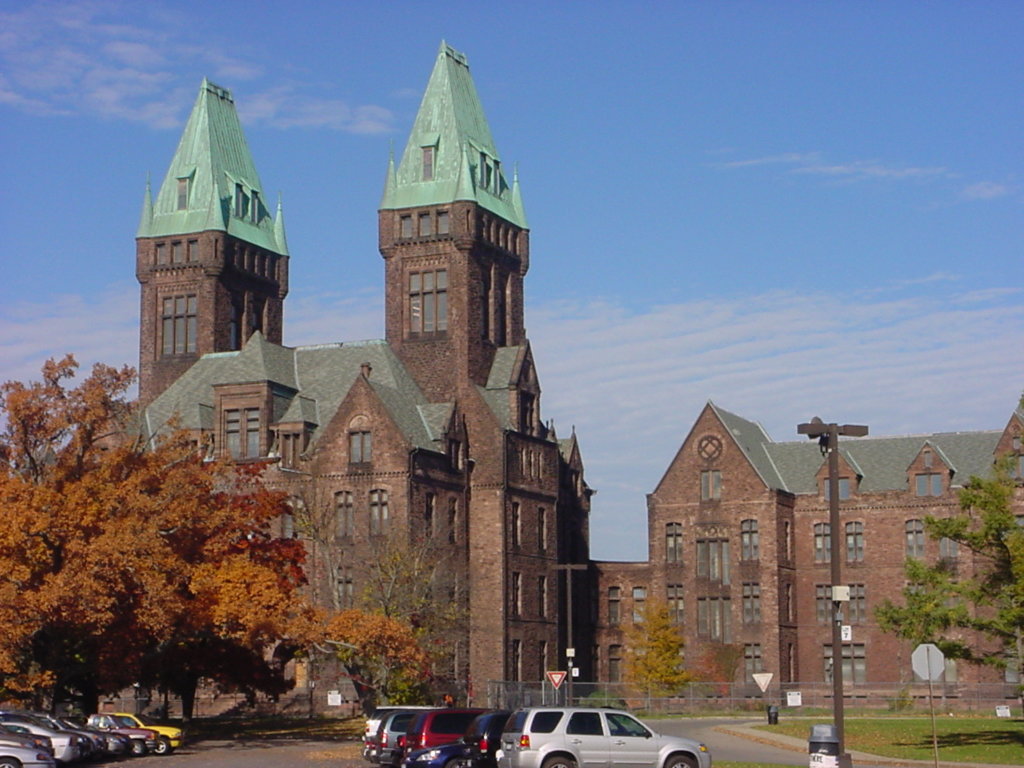
E.B. Green
Another prolific architect during the late 1800s was Edward Brodhead Green, also known as E.B. Green. His work can be seen extensively throughout Buffalo, including the Albright-Knox Art Gallery, Young Men’s Christian Association Central Building, and Twentieth Century Club (1894), which are all listed on the National Register of Historic Places.
Green’s other recognizable buildings include the gold-domed Buffalo Savings Bank, the Market Arcade and the Buffalo Crematory. Green also designed Elmwood Avenue, Main Street and Niagara Street and prepared the master plan for the campus of the State University of New York at Buffalo.
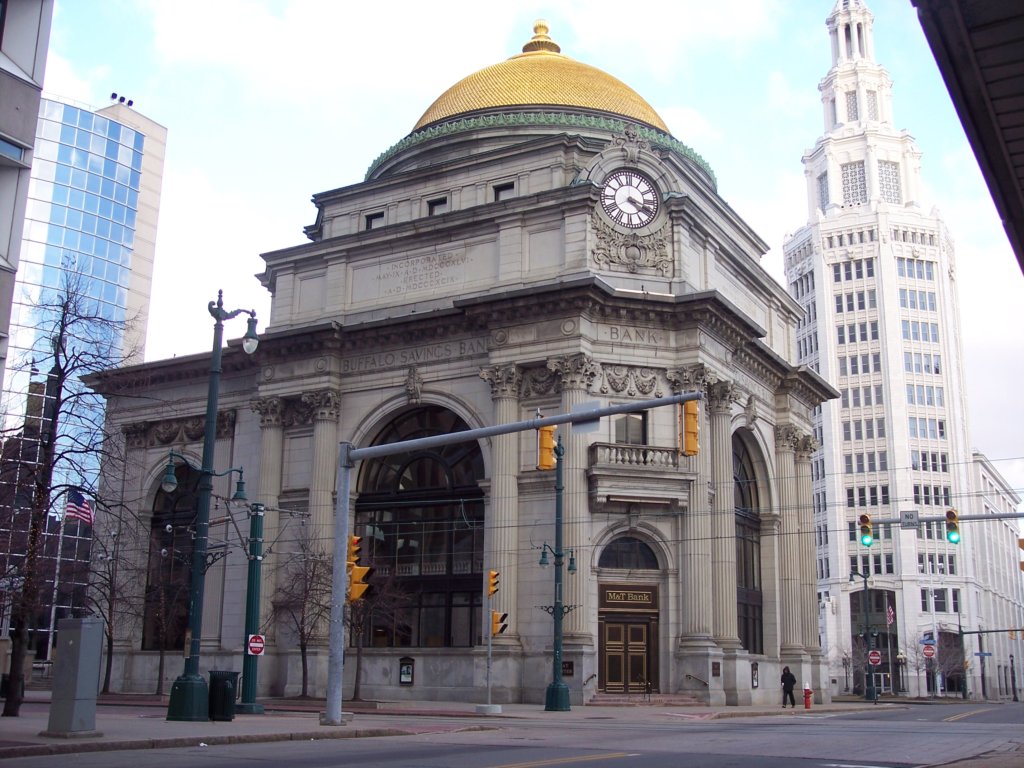
Louise Blanchard Bethune
Buffalo made history in another way when it came to pioneering architects. Louise Blanchard Bethune was born in Waterloo, NY but moved to Buffalo as a child and worked extensively in the city starting in her twenties. According to CityLab, she was the first American woman known to have worked as a professional architect.
In the late 1800s, Bethune became a prolific designer of industrial and public buildings in Buffalo and was best known for designing public schools. She received widespread recognition for her talents, becoming the first female member of the American Institute of Architects and the first woman to be made a Fellow of the organization.
She is best known for designing the neoclassical Hotel Lafayette, a high-end hotel in downtown Buffalo that became her most recognizable and celebrated design after it was completed in 1904. The Hotel was listed on the National Register of Historic Places in 2010.
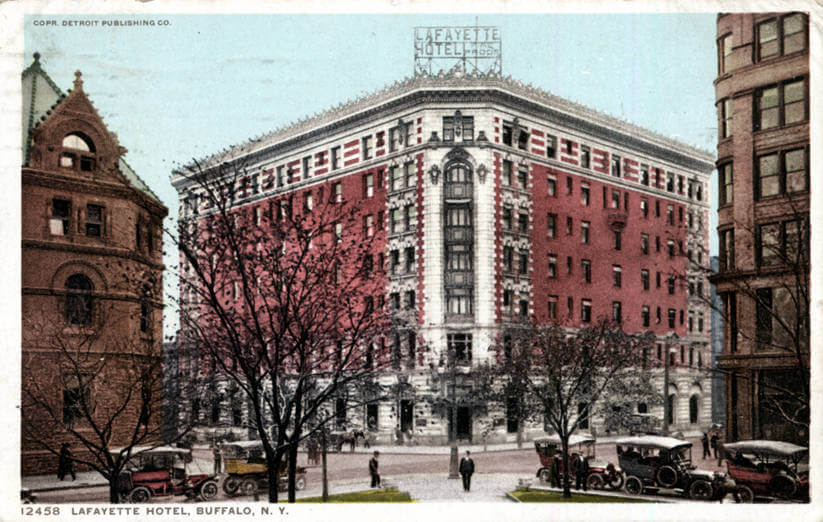
Buffalo-Niagara’s National Historic Landmarks
There are only about 2,500 places designated as National Historic Landmarks, the highest distinction that can be given to a property in the U.S. We’ve mentioned a few, but here is the full list for the Buffalo-Niagara region.
Buffalo
- Prudential (Guaranty) Building
- Darwin D. Martin House
- Buffalo State Hospital (Richardson Olmsted Complex)
- Buffalo and Erie County Historical Society
- St. Paul’s Cathedral
- Kleinhans Music Hall
- Edward M. Cotter
- U.S.S. The Sullivans
- S.S. Columbia Excursion Steamer (Relocated from Michigan in 2015)
Niagara Falls
East Aurora
Batavia
How many National Historic Landmarks have you visited? Which architectural wonders will you be checking out this summer? Let us know in the comments below.

 Fair Housing Notice
Fair Housing Notice 